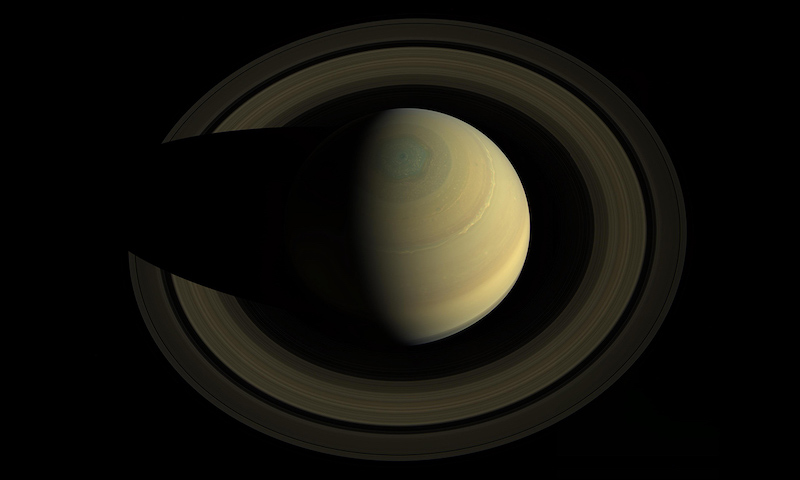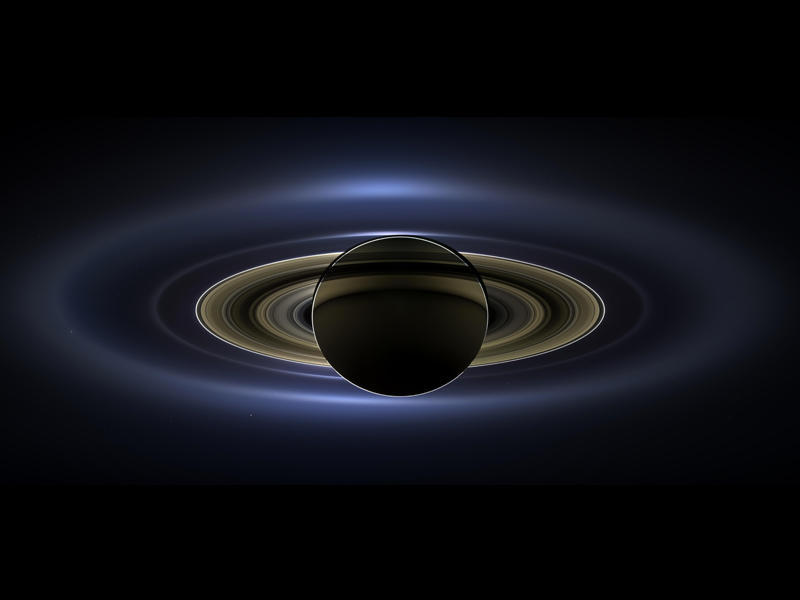
Are Saturn’s rings young, relative to the rest of the solar system? Did they form via the destruction of an icy satellite or comet? Are they a permanent feature of Saturn? Or will they someday cease to be? On October 18, 2022, astronomers announced a new study that’s helping them probe the secrets of Saturn’s rings. The astronomers used data from 41 solar occultations, events in which Saturn’s rings passed in front of the sun as seen from NASA’s Cassini spacecraft. This craft orbited Saturn from 2004 to 2017.
The observations provide clues as to the particle size distribution and composition of the rings. And those data, in turn, let astronomers deepen their understanding of how the rings formed, as well as what their ultimate fate might be.
The researchers – from the Southwest Research Institute, the University of Central Florida and the University of Colorado-Boulder – published their peer-reviewed findings in the December 2022 (Volume 388) edition of the journal Icarus.
Secrets of Saturn’s rings
Scientists want to better understand the origins of Saturn’s ring system. For example, how old are the rings? How did they form? Stephanie Jarmak from the Southwest Research Institute (SwRI) is the lead author of the new study. She said:
For nearly two decades, NASA’s Cassini spacecraft shared the wonders of Saturn and its family of icy moons and signature rings, but we still don’t definitively know the origins of the ring system. Evidence indicates that the rings are relatively young and could have formed from the destruction of an icy satellite or a comet. However, to support any one origin theory, we need to have a good idea of the size of particles making up the rings.
Solar occultations help reveal secrets of Saturn’s rings
To conduct the new study, astronomers used data from Cassini’s Ultraviolet Imaging Spectrograph (UVIS). Previously, while Cassini was still orbiting Saturn, the UVIS observed the rings while also looking at the sun. Since the instrument was looking through the rings, the particles would partly block the light coming from the sun. This is known as a solar occultation. UVIS could then measure the optical depth of the particles.
How? In general, the particles absorb and scatter the light from the sun. The amount of light blocked tells scientists the optical depth of the particles. This data provided clues as to both the size and composition of the particles. Jarmak said:
Given the wavelength of the light coming from the sun, these observations gave us insight into the smallest particle sizes with Saturn’s rings. UVIS can detect dust particles at the micron level, helping us understand the origin, collisional activity and destruction of the ring particles within the system.
Clues about planetary formation
By observing the sun’s light passing through the rings at various angles, the researchers can also learn more about the ring system’s overall structure. In addition, those findings can also be applied to planet formation in general, too. As Jarmak explained:
Ring systems around giant planets also provide test beds for investigating fundamental physical properties and processes in our solar system in general. These particles are thought to result from objects colliding and forming in a disk and building up larger particles. Understanding how they form these ring systems could help us understand how planets form as well.

Saturn’s lost moon Chrysalis
Last month, scientists at UC Berkeley said that Saturn’s rings likely formed when a former moon about the size of Iapetus, dubbed Chrysalis, broke apart after getting too close to Saturn. Ultimately, whatever was left of Chrysalis, that didn’t fall into the atmosphere of Saturn itself, became the rings. Moreover, computer simulations showed that Saturn’s largest moon Titan destabilized the orbit of Chrysalis, causing it to plunge too close to the planet.
A previous study in 2019 suggested that Saturn’s rings are likely less than 100 million years old. While Saturn may be the jewel of the solar system now, it wasn’t always!
Bottom line: A new study uses solar occultation data from NASA’s Cassini mission to better understand the composition, formation and other secrets of Saturn’s rings.
Source: Solar occultation observations of Saturn’s rings with Cassini UVIS











